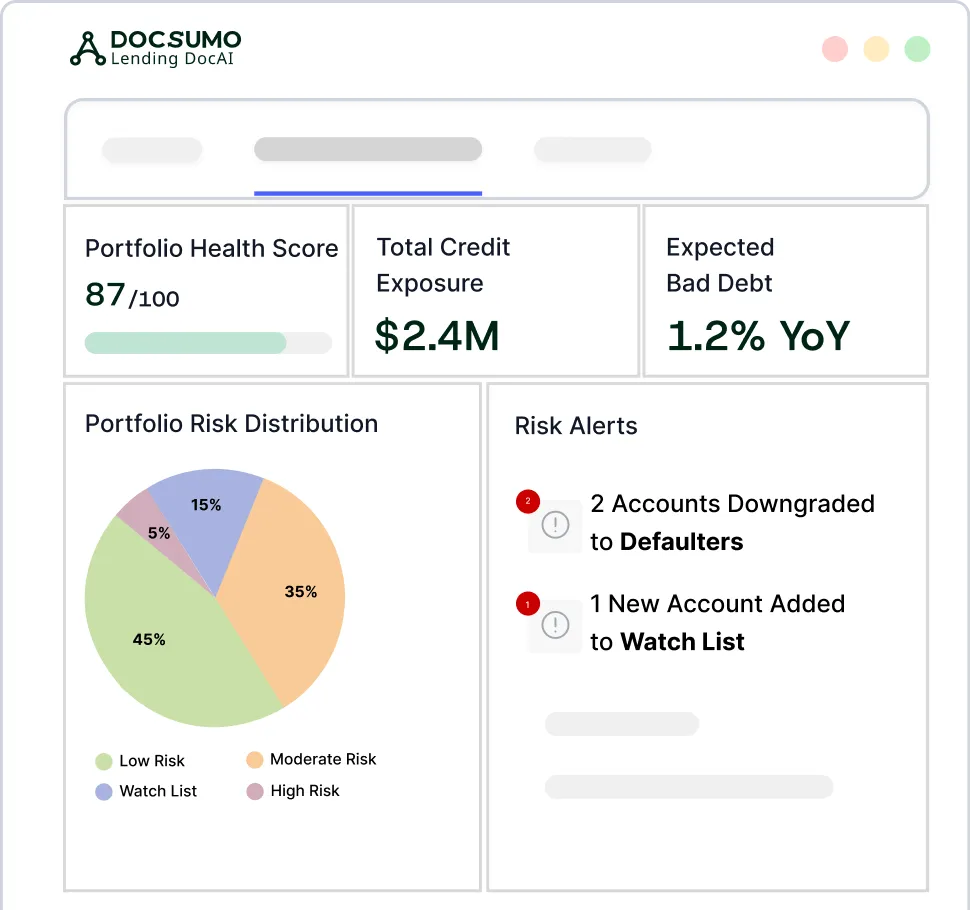Automate data extraction from your bank statements with 99%+ data accuracy
- Process bank statements in seconds, regardless of format.
- Get your extracted data across two levels of accuracy checks – automated validations and data review for unsure extractions.
- Reduce costs and manual review time by up to 80% with our self-learning AI.
Make faster decisions with insights from your Bank statements
Whether you're looking to process bank statements to reconcile, analyze credit profiles or verify tax reporting faster - Docsumo's intelligent algorithms help you extract the data you need.
General information
Account Name
Account Number
Bank Name
Opening Balance
Closing Balance
Related information
Start Date
End Date
Account Address
Account Type
Transaction description
Other
Check number
Debit
Credit
Merchant
Other Line items
See how we can help your Accounts and Finance teams.
Let's talk.
Docsumo's intelligent document processing enables you to extract data easily, efficiently, and accurately. Fill up the form to speak with an automation expert.



.webp)


.svg)
.webp)






















.webp)
.webp)
.webp)
.webp)